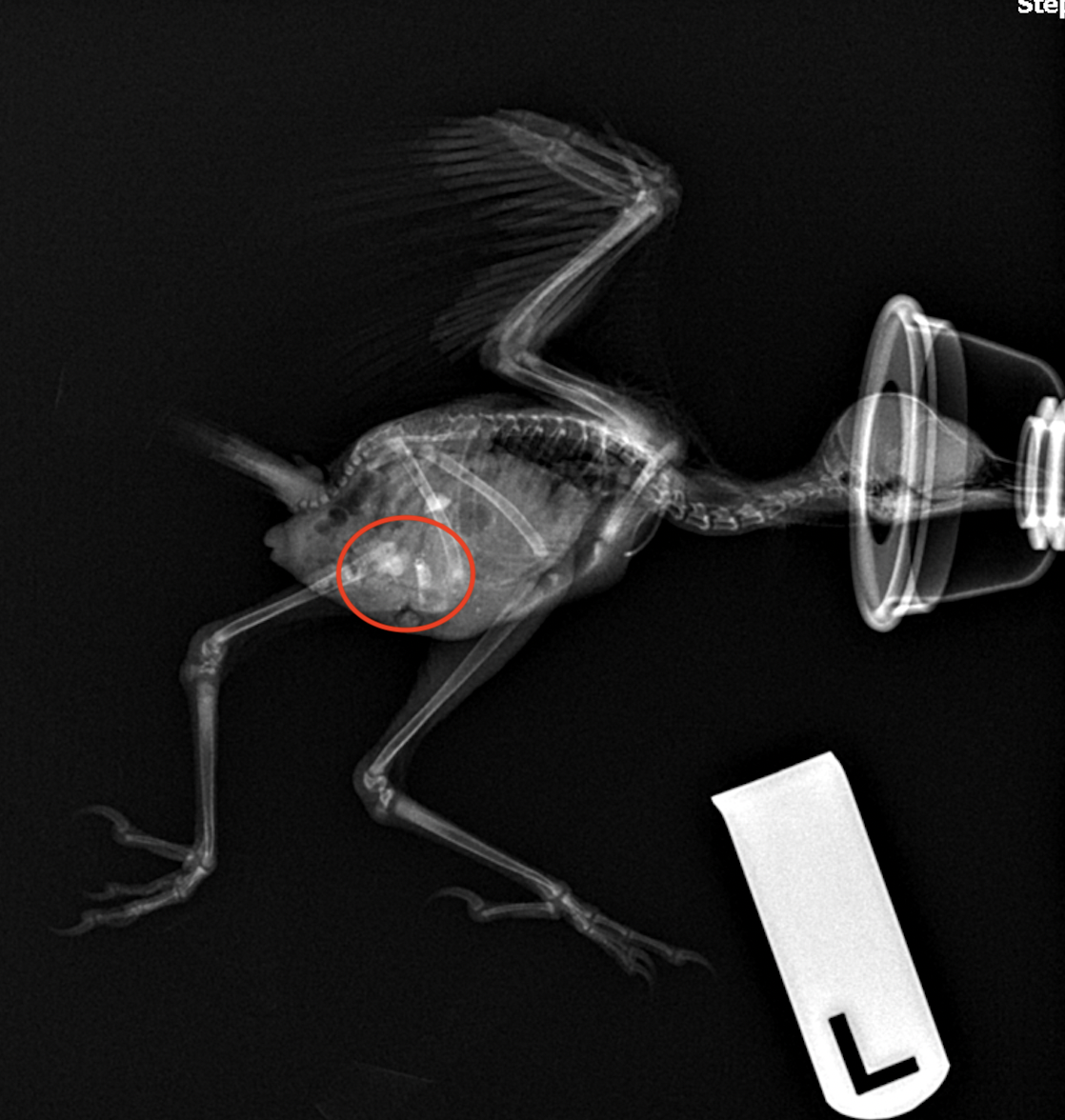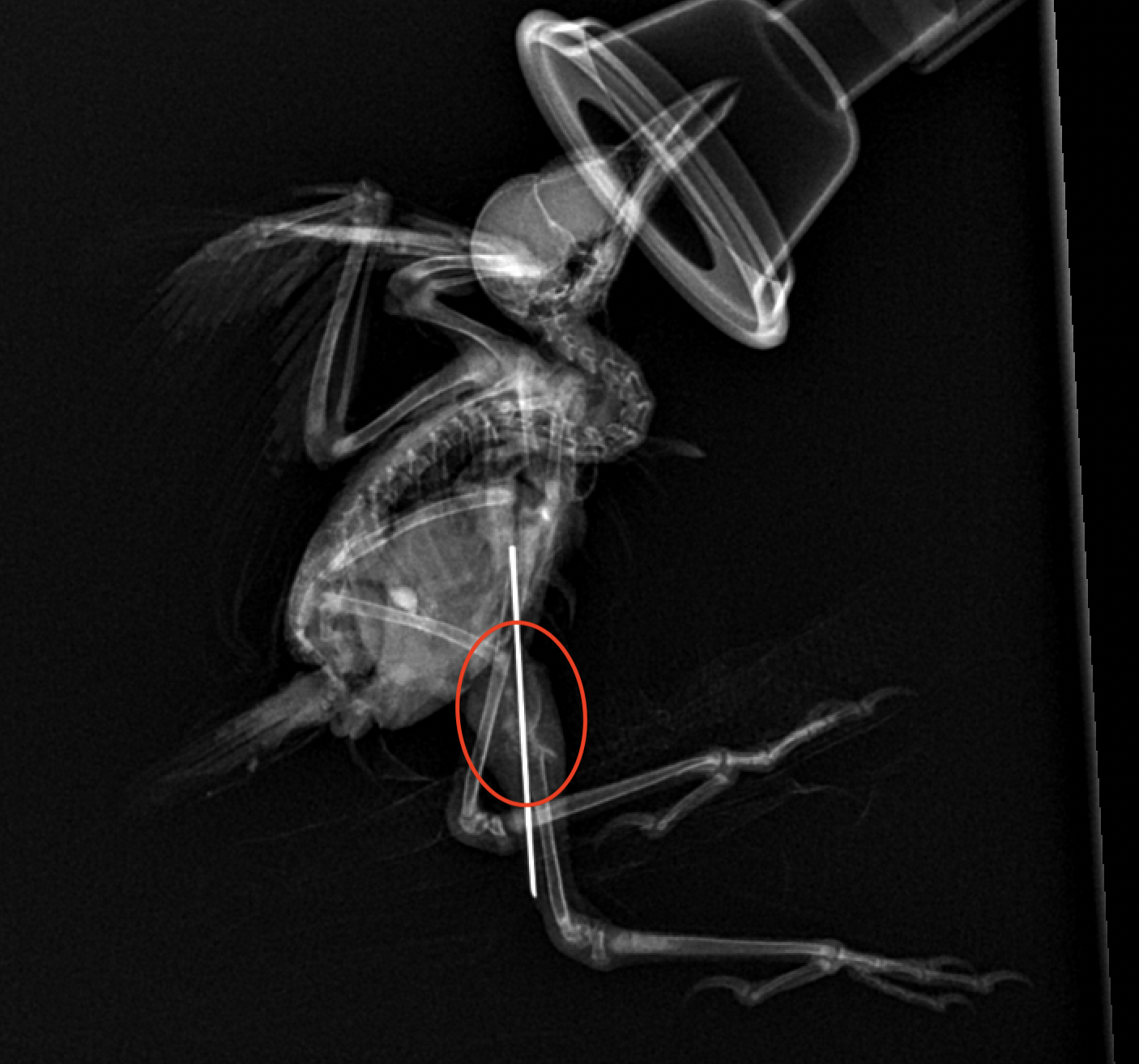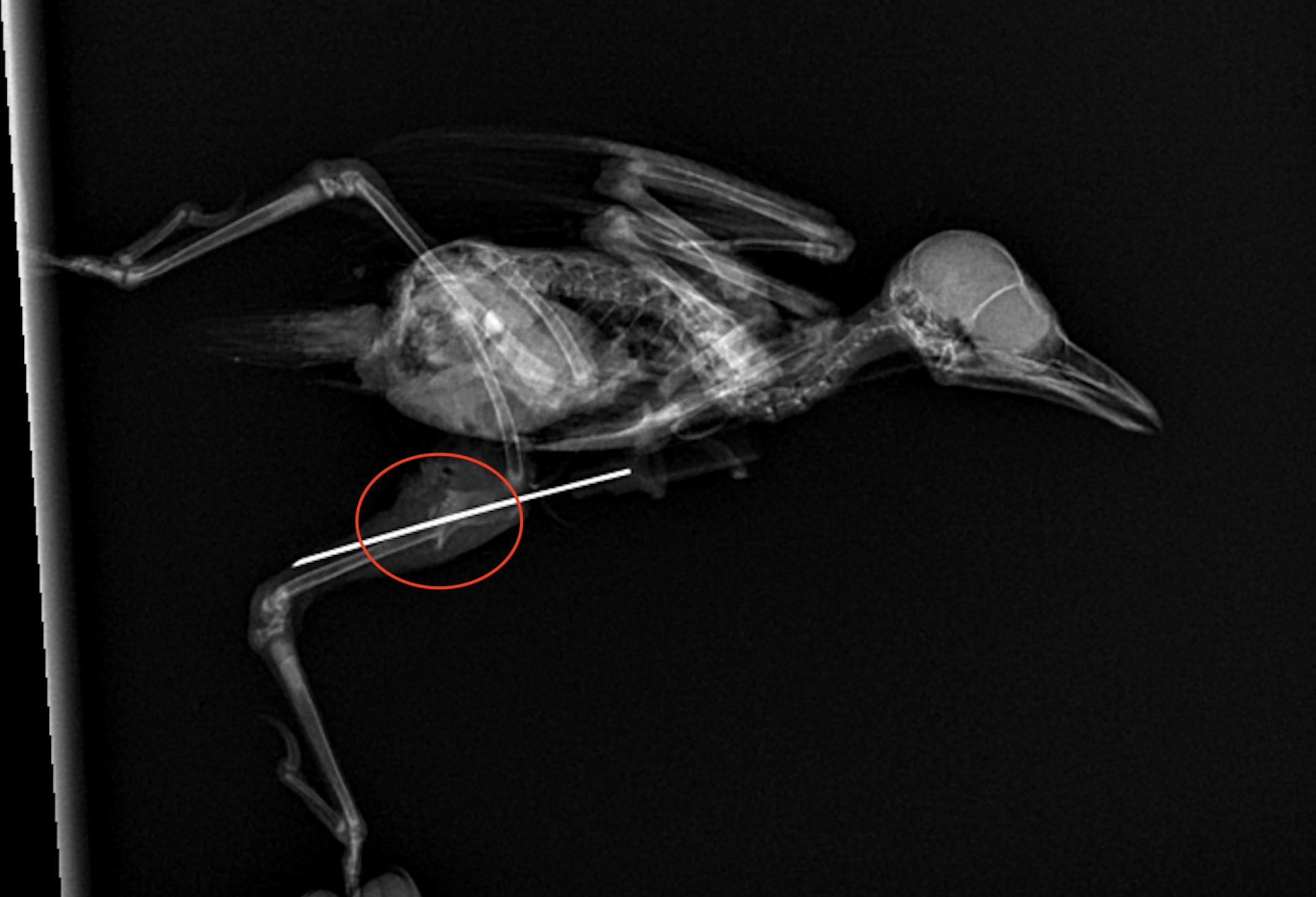Written by: Daniela Hojda, PHSS Intern
Pelican Harbor sees Blue jay nestlings all the time, so when patient 21-1193 arrived at Pelican Harbor cold, depressed, and dehydrated, the rehab team knew exactly what to do to save it. It was immediately placed in an incubator to try to bring its body temperature up, and given several medications to help with each issue it presented with. Patient 1193 was given subcutaneous fluids with vitamin B complex, which are vital in helping resolve a patient’s dehydration. Often, vitamin B complex is added to the subcutaneous fluids to increase a patient’s appetite and to increase their metabolic and brain function. Also, one of the staff members heard crackles when she listened to the patient’s lungs, indicating that 1193 had aspirated. Aspiration is usually seen in baby birds when they are not brought into Pelican Harbor immediately after being found. Before bringing a baby bird to Pelican Harbor, people sometimes try to take care of and feed it. It is very easy for baby birds to aspirate food if not fed correctly, and this may lead to several health problems such as aspiration pneumonia, which in such tiny patients, is often fatal. Patient 1193 was prescribed sulfadiazine/trimethoprim (SDT), a broad spectrum antimicrobial medication, in order to help resolve the aspiration. After a few hours at Pelican Harbor, patient 1193 was much more alert and active. By the next day it seemed like a perfectly healthy nestling.
Unfortunately, two days after patient 1193 was brought to Pelican Harbor, the rehabilitation staff noticed that its right leg was resting in a concerning position, and the patient struggled to stand on it. The staff took radiographs to try and figure out why patient 1193 could not bear weight properly on its right leg. They found an old fracture of the right tibiotarsus, which had healed completely unaligned. Because the fracture was not aligned before healing, the patient’s leg was permanently bent in a way that made it unable to stand properly. This was a very worrying finding for patient 1193’s future, because an animal that is unable to use one of its legs cannot be released back into the wild. The decision was made to give patient 1193 a fighting chance by performing a surgery where the veterinarian will realign the old fracture so it can heal correctly. Once the bone is realigned, the veterinarian will then put a pin through the bone to hold the bone in place and keep the broken ends aligned. Although this surgery is extremely risky for such a small and young bird, this was patient 1193’s last chance at recovery. The veterinarian used X-rays taken before the surgery so she could get a good look at the bone that needed to be realigned. After the surgery, the staff took another set of X-rays to determine if the pin was in the right place for the bone to heal correctly. The placement of the pin looked promising, and if the patient survived the recovery period after anesthesia, the prognosis for patient 1193 was positive but still guarded. However, it’s important to remember that surgery on such a small and fragile animal is often extremely stressful which makes the recovery process extremely challenging.
Although everyone at Pelican Harbor had high hopes for patient 1193, unfortunately the stress of the surgery and anesthesia took a toll and the patient died a few hours after surgery. The staff at Pelican Harbor gave patient 1193 a fighting chance with this surgery; however, the surgery proved to be too stressful for the young Blue Jay. This type of surgery is one of the procedures used to align fractures in birds; however, the big challenge for this particular patient was how small and young it was, making it a much more risky surgery. If the patient had survived the surgery, the pin would have remained in the bone for a little over a week until a callus around the fracture formed. The patient would then be sedated again to remove the pin. Once the pin is removed we would start extensive physical therapy to ensure the patient has full use of the leg. If the patient maintained full use of the leg and no other issues arose then the patient would be a candidate for release. It’s important to remember that in wildlife medicine, rehabbers must consider that once an animal is released back into their habitat, that animal must be able to fend for themselves. An animal that has any health issues or anatomical flaw that reduces their fitness will most likely not survive in the wild.





